Above: Titled: Three Auckland Boys, B.W. Galloway, J. Pepper, and A. Williams. The D.W. Galloway album. Photo courtesy of New Zealand Maritime Museum. 2021.90.1
The New Zealand Maritime Museum, Hui Te Ananui a Tangaroa, protects the stories of Aotearoa’s extensive relationship with the sea, and shares histories of immigration, trade, design, innovation and leisure. The Museum, which is situated in Tāmaki Makaurau’s Viaduct Basin, first opened in 1993 and houses a vast archive relating to New Zealand’s maritime history.
The NZ Maritime Museum recently enlisted NZMS to digitise four photo albums (c.1930-1950) from its collections. Two of the albums feature the voyages of the barque Penang while the other two depict the WWII hospital ship Maunganui. All the albums were gifted to the NZ Maritime Museum from the Wellington Museums Trust, and were originally collected by the former Wellington Maritime Museum. This transfer to the NZ Maritime Museum was fairly recent and little is known about the albums themselves — however, due to the interesting nature of the photographs, the Museum wanted to take a chance and digitise them so they could be shared online.
“We hope to learn more about the albums through the process of cataloguing them. In both cases, the albums arrived with other documentary heritage about the families of their donors, and the seafarers who created the albums. We will use this in conjunction with the digitised images to understand more about the seafarers as well as what the photos show us.” — Danielle Carter, Archives & Library Manager, New Zealand Maritime Museum.
While there is not a lot of public information available relating to the albums specifically, information about both ships can be found online and offers some insight into the subjects of the photographs, revealing who might have been on board and their unique experiences at sea.
Barque Penang
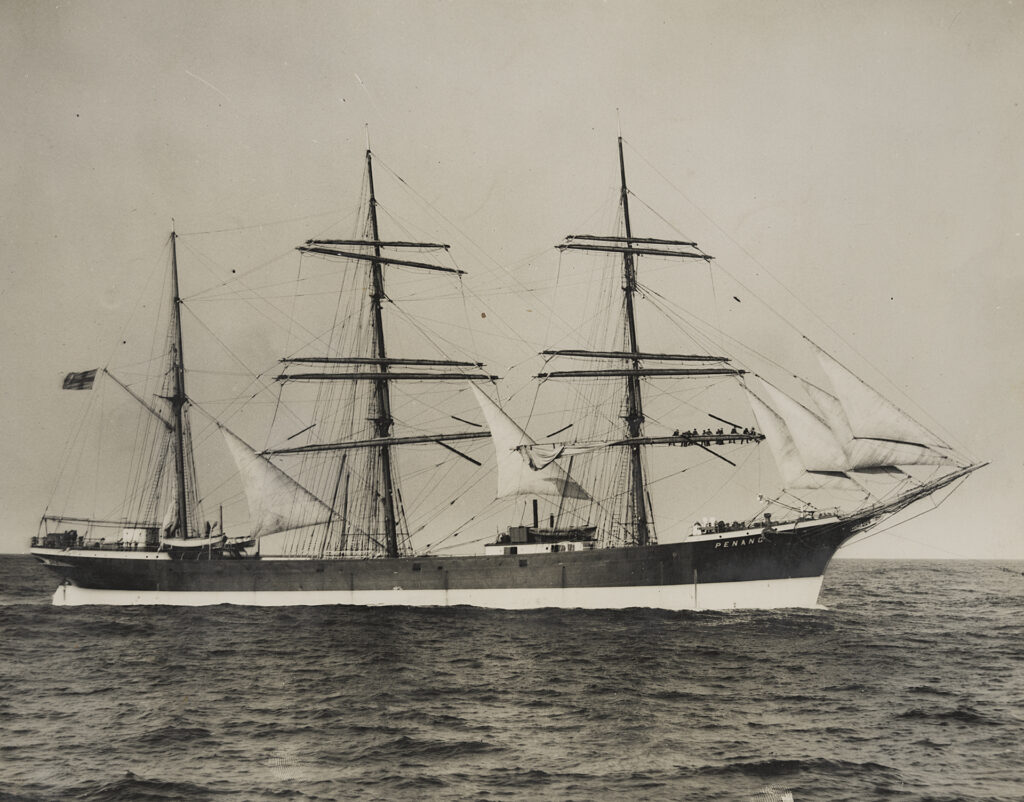
Built in Germany as a three-masted steel barque in 1905, the Penang was emblematic of the final generation of ocean-going cargo carrier. It originally served in the South American nitrate trade before being sold in 1920 to Finland. At the time the photographs were taken, the Penang had been sold again, this time to Gustaf Erikson in 1923, and was being used in the Australian wheat trade.
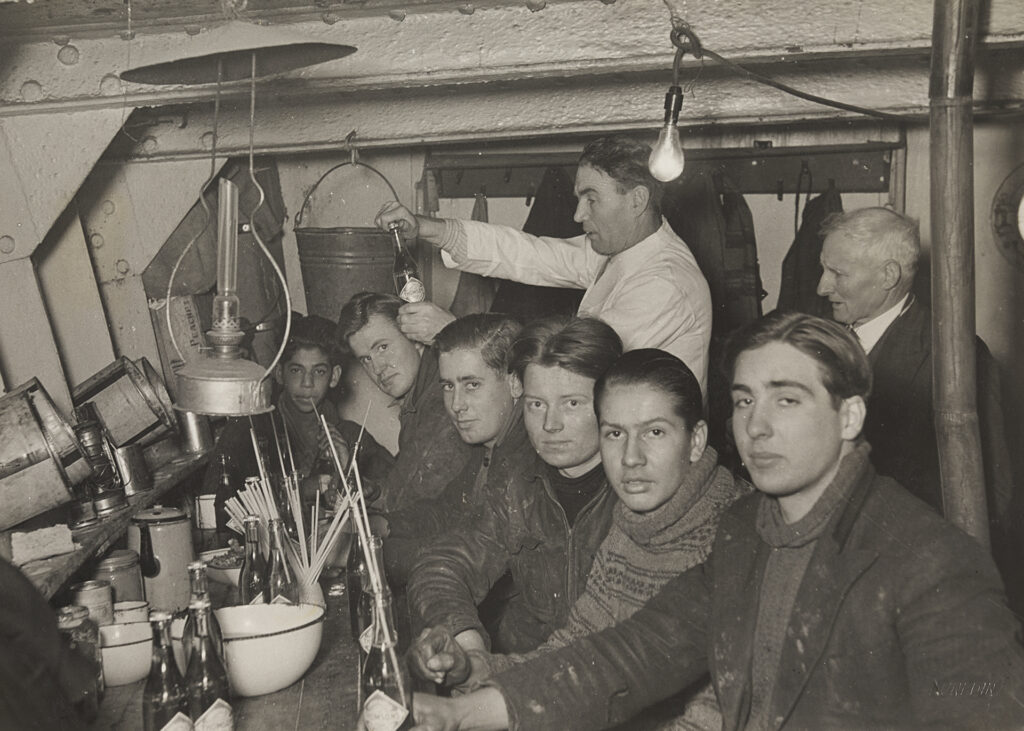
The Penang participated in the famous grain races which brought Australian wheat to the United Kingdom from the Spencer Gulf. Started in 1928, these “races” often involved more than twenty large sailing vessels (all owned by Erikson or Lundquist) which departed on annual voyages from Australia to London, or another western European port. It was not a race in the usual sense of the word, but there was a great rivalry between ship Masters to complete their passage the fastest.
The photographs in the D.W. Galloway albums were taken in the late 1930s, and were compiled by a young crew member from New Zealand. They show images of the ship itself, as well as revealing daily life on board. The crew member who put together the albums (and appears in many photographs himself) went on to become a Master Mariner and Harbourmaster of Wellington: Captain D.W. (Bill) Galloway.
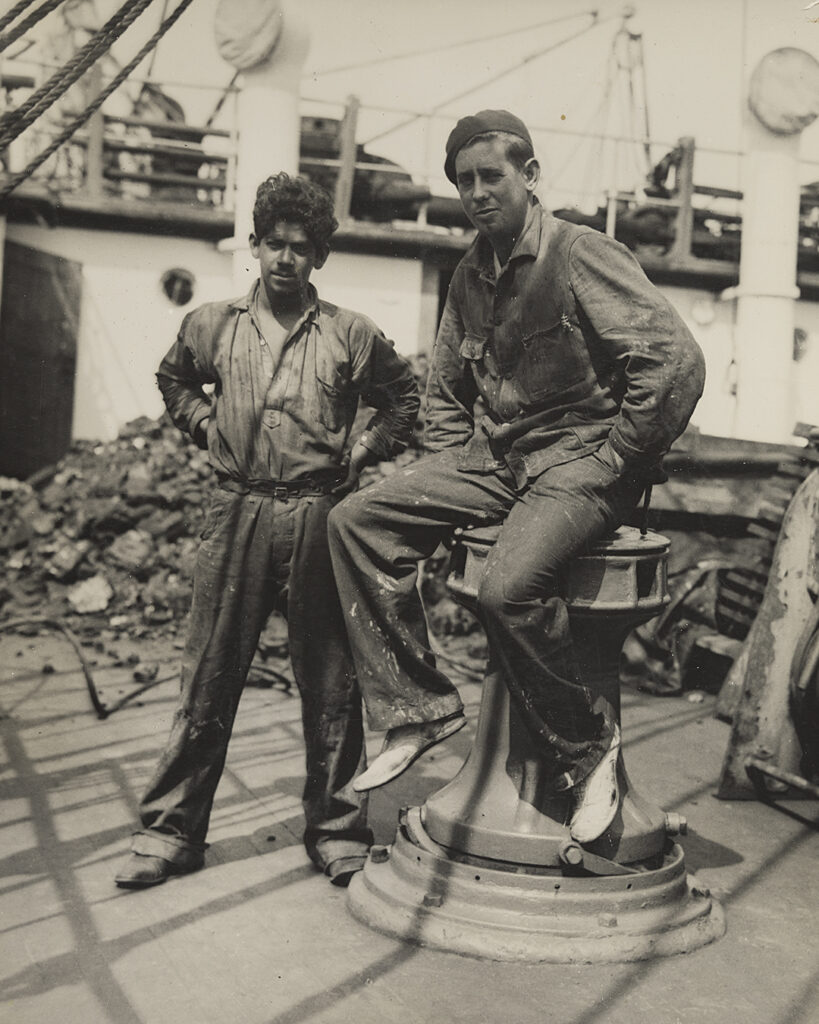
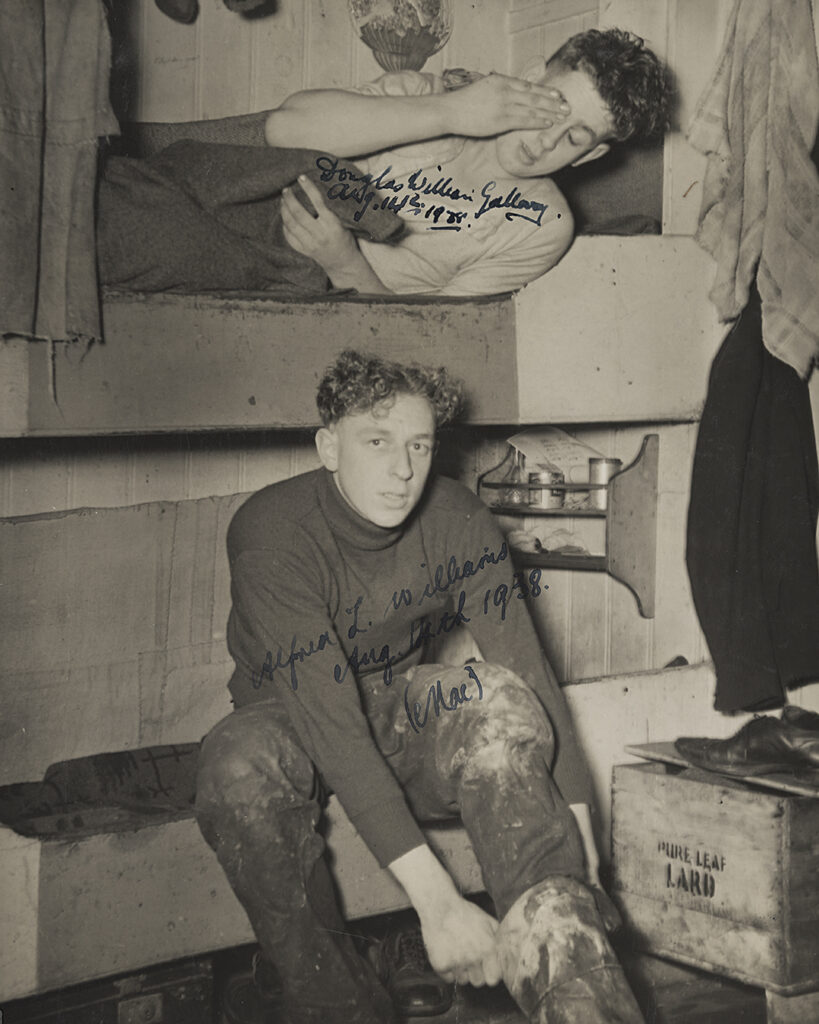
“For me, the types of images that stand out are those that show crew working or at leisure on board, and those that suggest what it might have been like to be working on a sailing ship during rough seas. There are photos of crew in the galley and in their bunks, and there’s a real sense of the camaraderie of working at sea together.” — Danielle Carter, Archives & Library Manager, New Zealand Maritime Museum.
In early 1940, the Penang set sail from Port Victoria in South Australia, stopping briefly in Stenhouse Bay to take on board a deserter who had been apprehended by police. This is the last known detail about the ship’s passage because, sadly, it never made it to its destination in Queenstown, Ireland. The exact account of Penang’s final hours are shrouded in mystery and its disappearance is said to have heralded the end of the era of commercial sail.
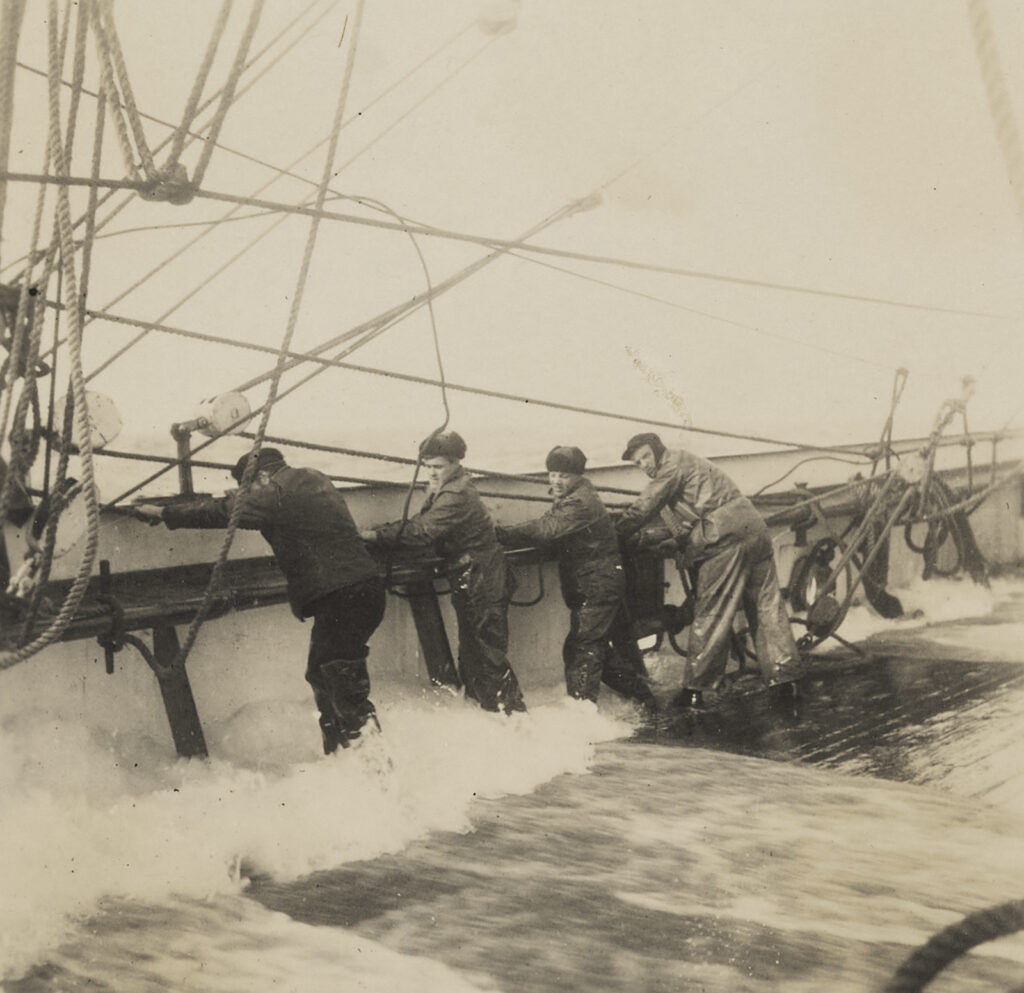
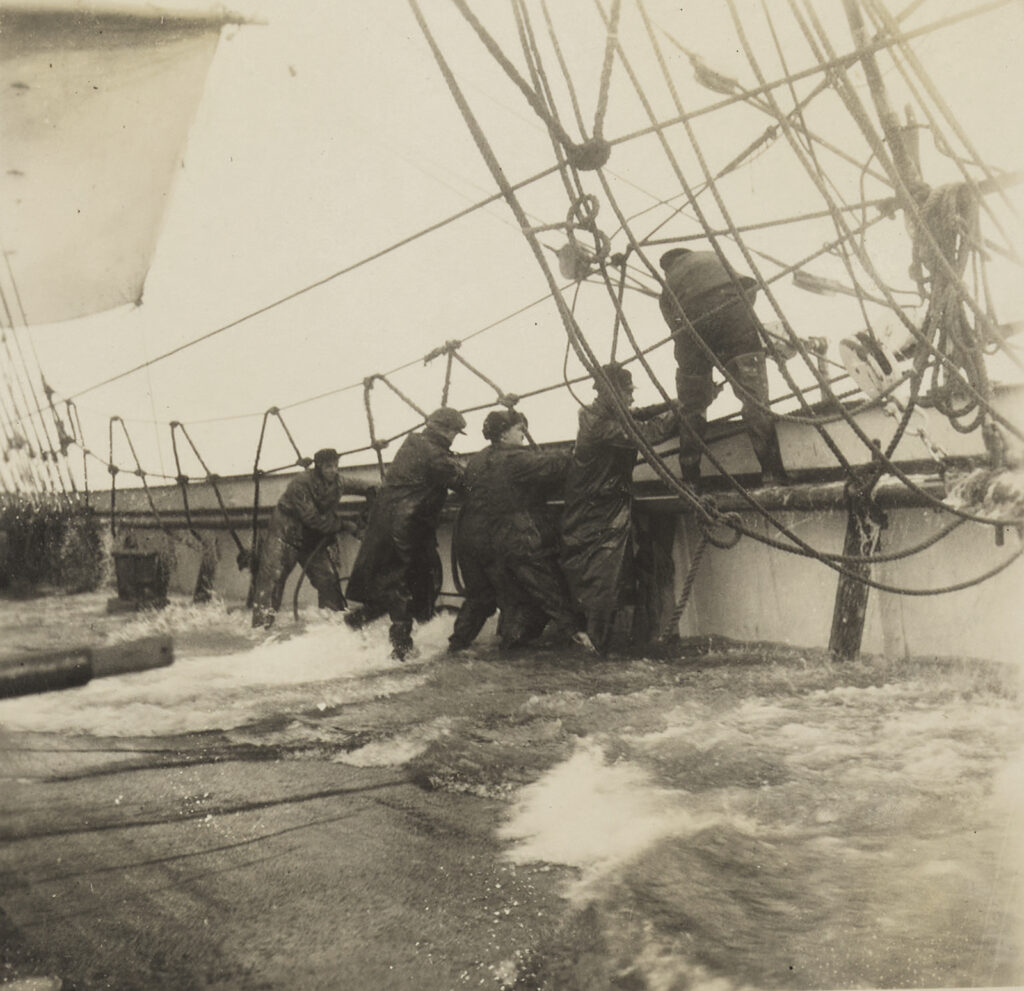
In March 1941, the Penang was registered as “untraced” at Lloyd’s and the fate of its crew was not confirmed until after the war. Berlin radio eventually announced that the Penang had disappeared due to being sunk by a torpedo. It was revealed that a German submarine, U-140, attacked the Penang just off the coast of Ireland on the 8th December 1940, killing all 18 crew members. The Penang holds the sad distinction of being one of the last deep-water square riggers to be lost.
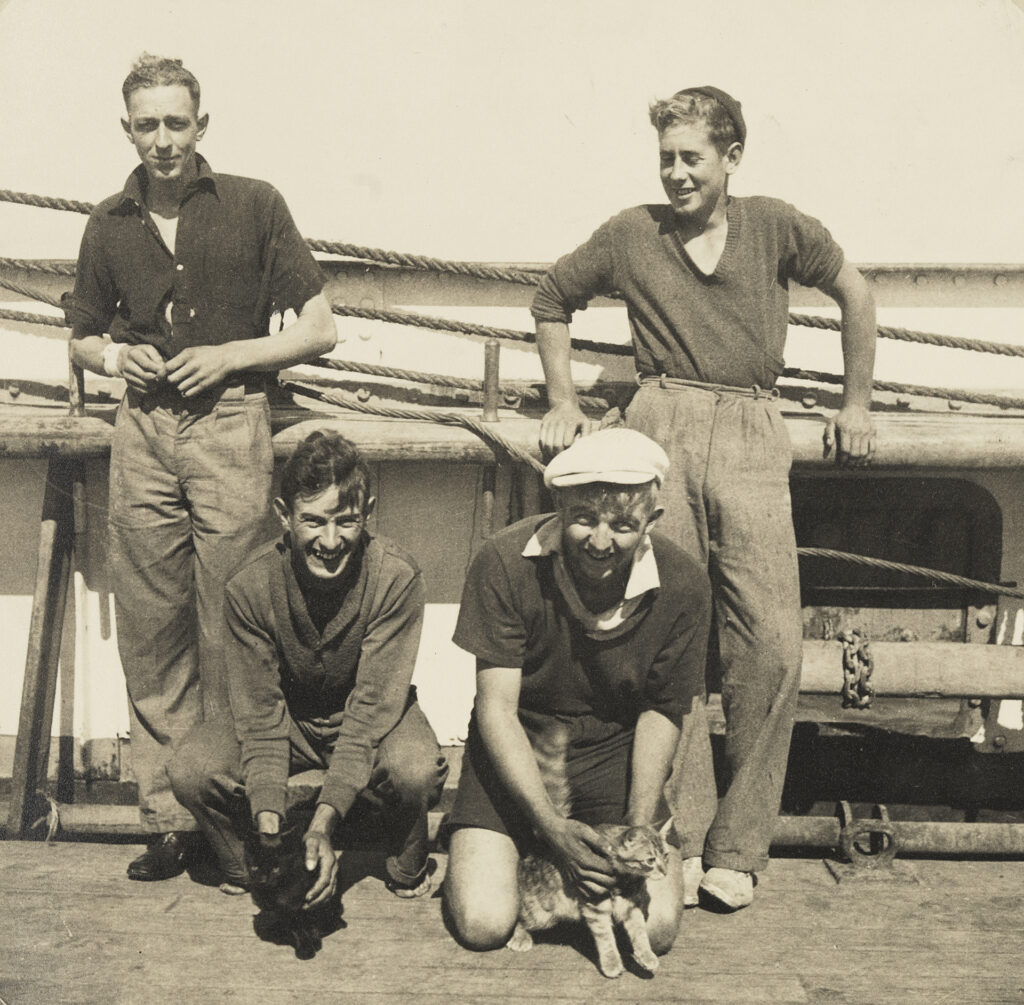
HS Maunganui
The two albums that feature the hospital ship Maunganui were likely compiled by a man called H.M. Robson, and one page states that the photographs show scenes from Voyage 16. The images uncover life on board the ship, as well as places that the crew visited during World War II.
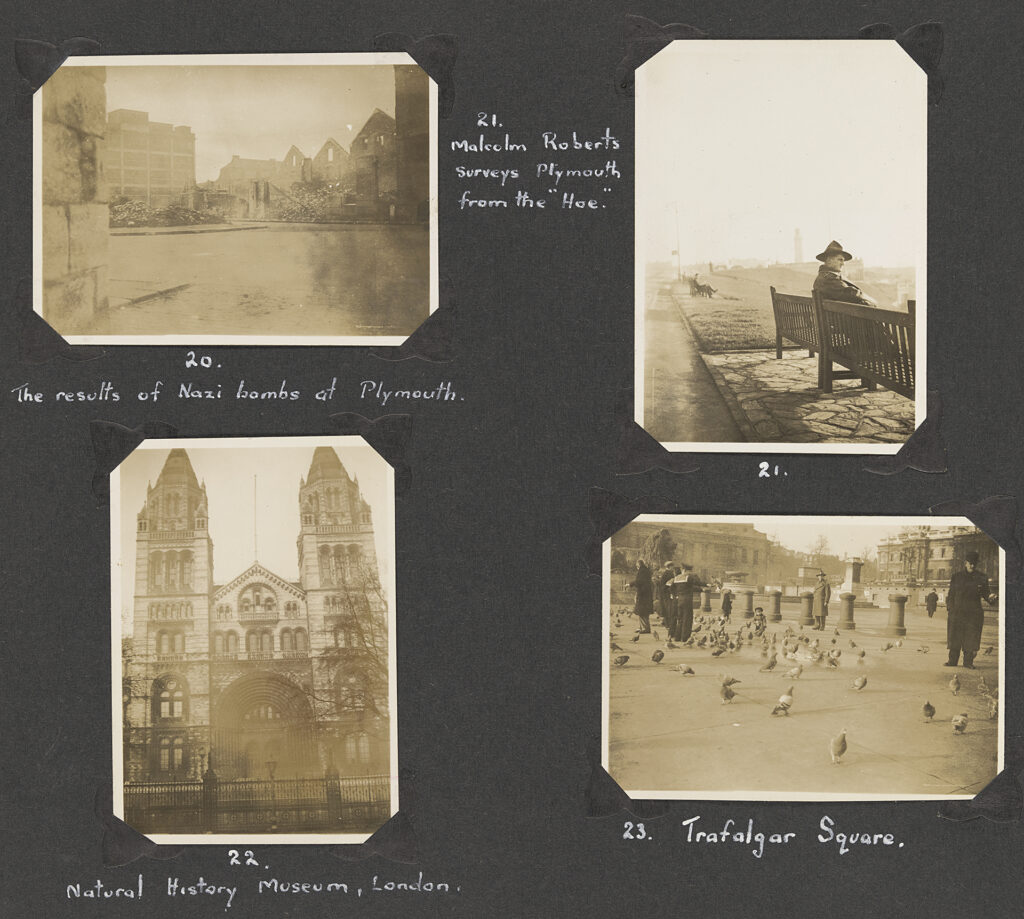
The HS Maunganui was an exceptional hospital ship and although it was already 30 years old at the time of conversion, it was larger than both the Maheno and Marama hospital ships from WWI, weighing 7527 tons. It was impressively equipped, boasting refrigerators in every ward, and electric lifts. Some specialist gear that was installed had to be urgently secured from the United States to ensure the ship was satisfactorily transformed from its old purpose as an oil burner.
HS Maunganui was fitted with 22 fracture cots, 84 single tier cots, and 139 two-tier cots, allowing it to help a large number of people who needed assistance during WWII. The theatre block was well-appointed, comprising a main theatre, as well as rooms for x-ray, plaster, sterilisation, massage, laboratory, diathermy, dental surgery, and dispensary.
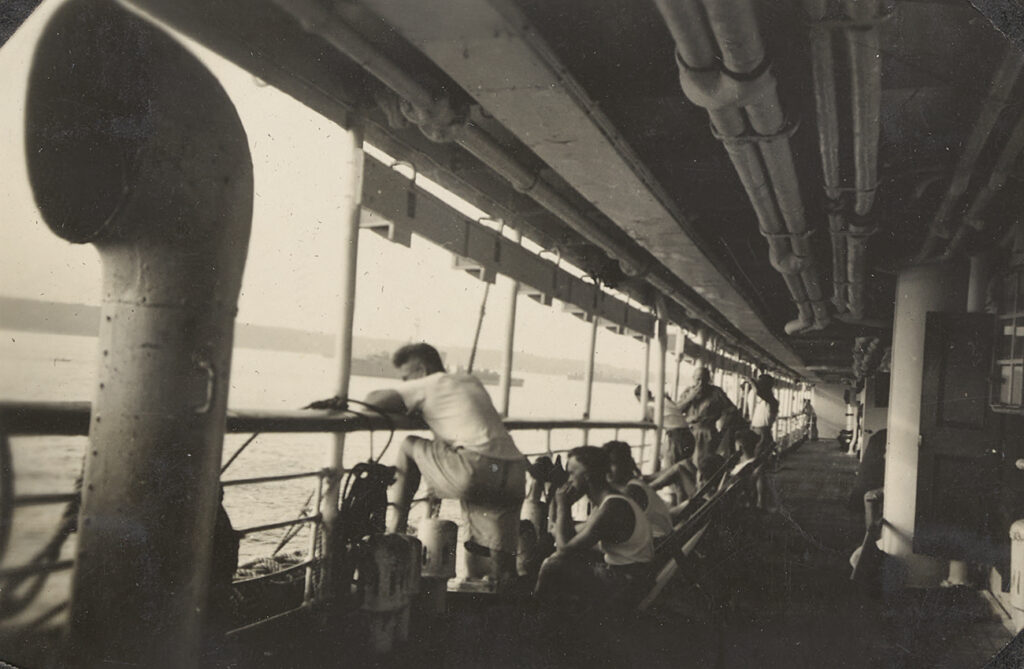
The placement of the autoclave is one feature that distinguishes HS Maunganui from the layouts of conventional British hospital ships. Usually, this equipment is placed in the theatre block, but on the HS Maunganui, it is situated some distance away on the afterdeck. This tuned out to be a huge benefit for those on board because it prevented overheating of the theatre while traveling through the tropics — an area where the ship spent a lot of its time!
Events in Greece during WWII hastened the completion of the HS Maunganui’s conversion into a hospital ship and it was ready for departure on the 21st of April, 1941. The HS Maunganui was manned by the Union Steam Ship Company of New Zealand Ltd., with the deck, engine, and provedore departments all staffed by the company’s officers. The Director-General of Medical Services selected the medical personnel and the Matron-in-Chief selected the sisters from the New Zealand Army Nursing Service. The medical staff consisted of 104 nursing sisters, medical officers, and orderlies who were under the command of Colonel Murray.
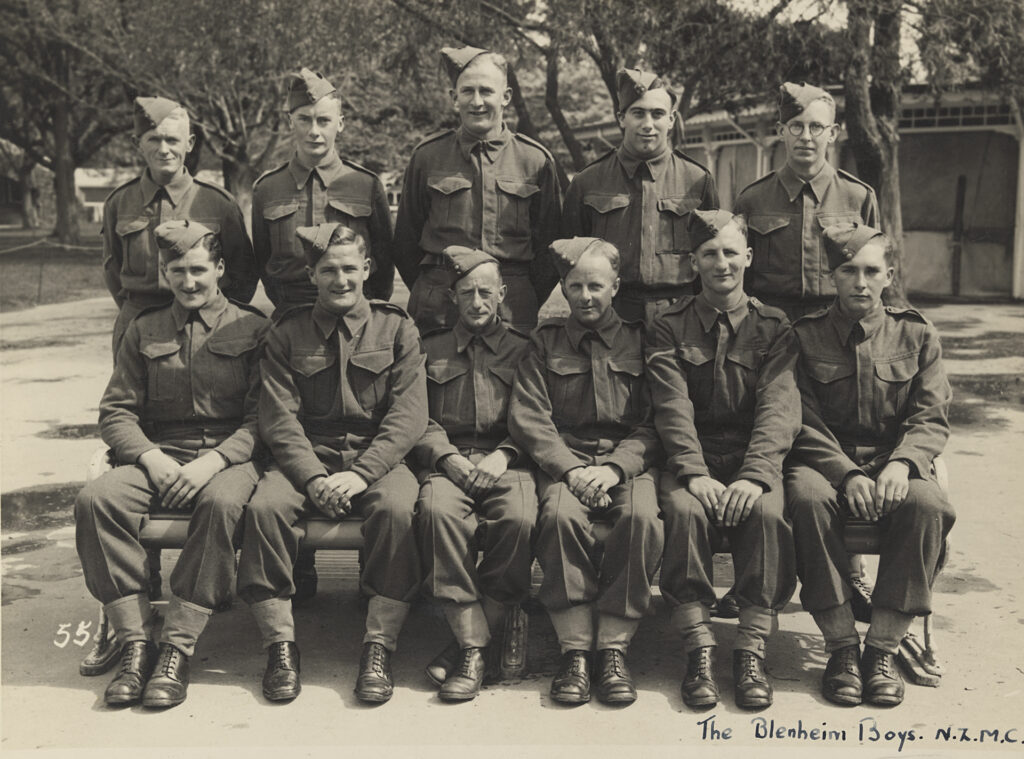
On the 22nd of May 1941, the ship arrived in Suez Port, Egypt. It is reported that a commander of a British hospital ship, Colonel MacCormick, declared it was the best equipped hospital ship that he had seen during the war, having himself commanded three hospital ships and visited every one that had arrived in the Middle East.
In order to collect casualties from Greece and Crete, the HS Maunganui was held at Suez until 10th June, 1941. When it finally embarked back to New Zealand, it carried 338 patients on board, including many casualties from the theatre’s first major actions. On its succeeding fourteen voyages, the HS Maunganui was always full on its homeward run and often its outward trips too. It was customary to collect British casualties in Colombo and Mumbai and transport them to Egypt so they could be transferred onto a British hospital ship.
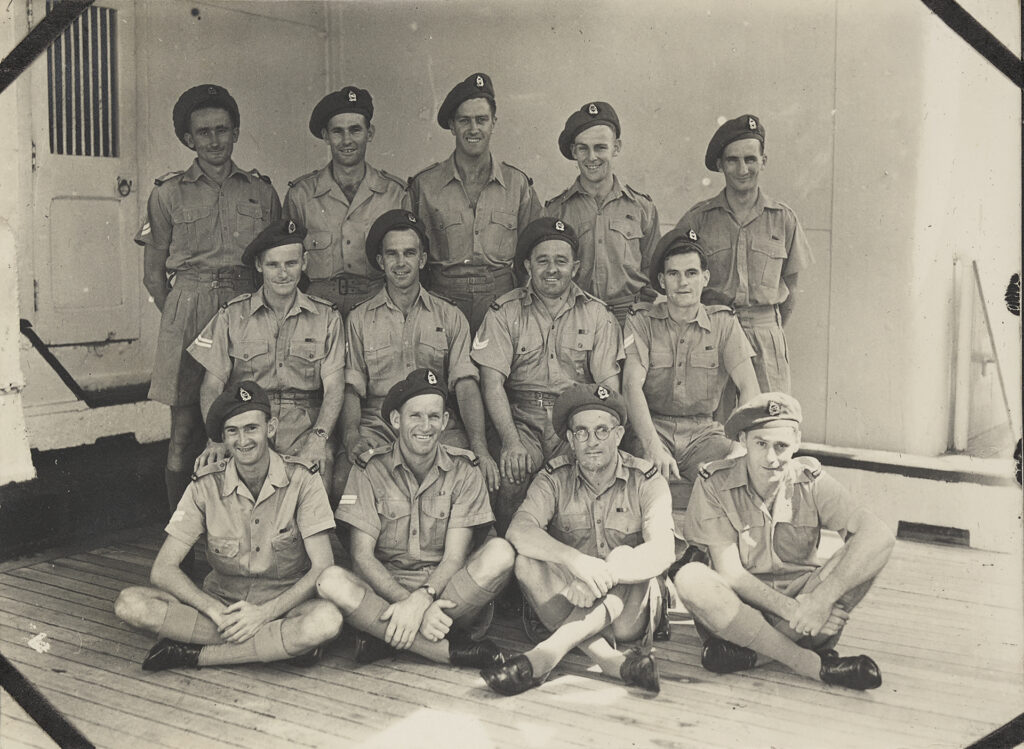
The HS Maunganui was almost always on service and its only “rests” include being laid up for overhaul during 6 six weeks in 1942, and a period in 1943 when one of its propellors was damaged and needed to be repaired in The United Kingdom.
Notably, in November 1942 the HS Maunganui and an Australian hospital ship called Wanganella bravely came to the aid of a Dutch tanker, MS Ondina, that had been attacked by two Japanese commerce raiders and set on fire. This sort of cooperation between Australia and New Zealand authorities was a key feature of service during the war, and particularly common among hospital ships. Throughout the war, the Maunganui and Wanganella worked together to evacuate injured soldiers from the Middle East, and were also frequently assisted by a Netherlands hospital ship, the Oranje.
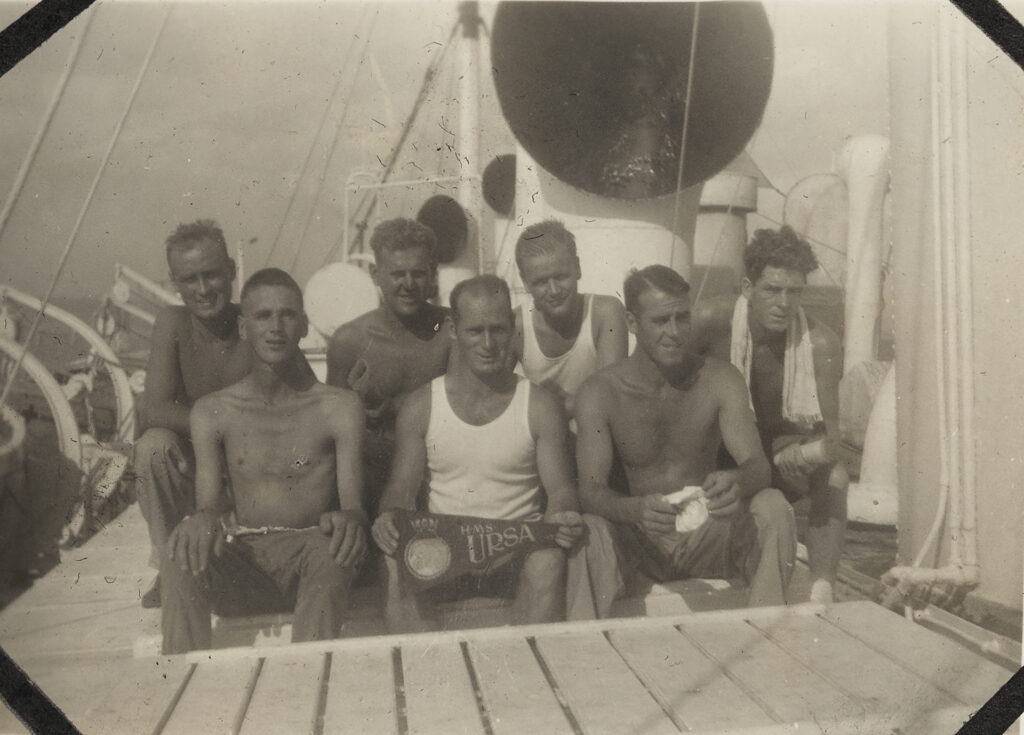
Thanks to the very high quality control during the Maunganui’s construction and its fine workmanship, the ship turned out to be not only a successful Union Line ship, but a solid vessel that could be trusted to safely transport some of New Zealand’s most vulnerable during WWII.
Digitisation Process
Our team in Tāmaki Makaurau digitised the four albums with a “fill-the-frame” approach to achieve a very high resolution (~6000PLE per page) and 16-bit depth. The albums were in good condition, so their handling and capture was a straightforward process. To produce a highly accurate reproduction of the albums, we captured them using our Phase One iXG camera, which utilises Schneider Kreuznach optics and a 100 megapixel sensor, allowing us to capture even the finest details.
This degree of detail, quality, and accuracy is crucial for digitising precious taonga like the NZ Maritime Museum’s photo albums. It ensures this important material (which is prone to degradation) and the stories it holds can be preserved for the benefit of researchers, historians, and even future generations.
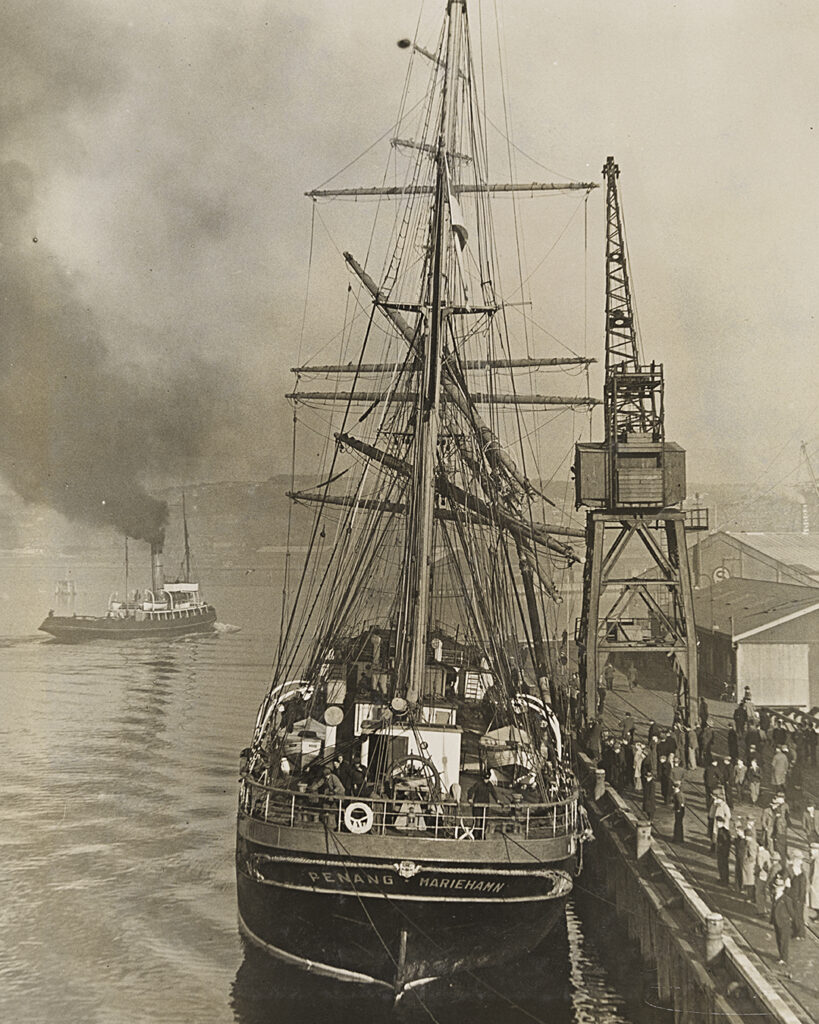
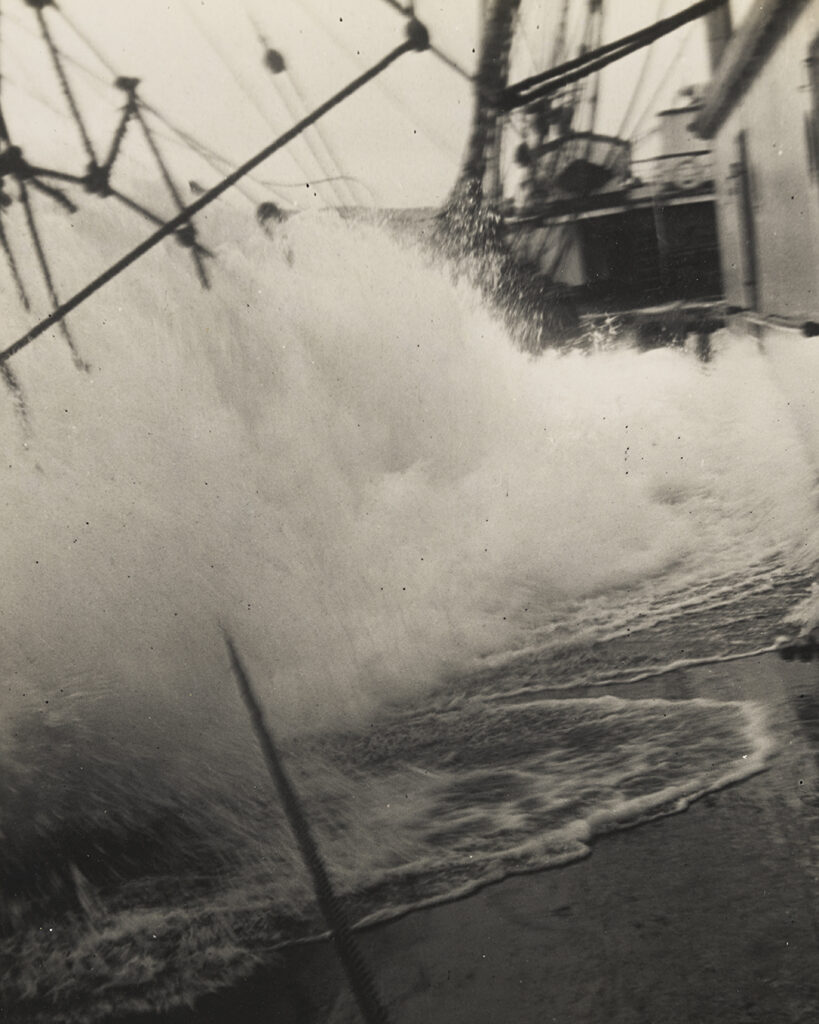
Digitising collections or archives serves many purposes: it supports preservation, reproduction, engagement, and accessibility. Digitisation of the New Zealand Maritime Museum’s albums helps uncover stories and information about the people featured within the photographs that otherwise might have been lost.
Some of the most significant events that have shaped our nation have associations with defence and war — which is often connected to maritime history. Preserving this type of cultural heritage contributes to our understanding of societal values and traditions while ensuring we remember not only the sacrifices made by people on the frontlines, but those made by civilians as well. Importantly, these albums reveal the stories of people in the Merchant Navy whose work on board ships often took them into dangerous waters throughout the war.
NZMS is grateful for the opportunity to work with this remarkable material, and we look forward to learning more about the albums through the NZ Maritime Museum’s subsequent research and cataloguing!
References:
- Goossens, R. (n.d.). Union Line of New Zealand: SS Maunganui. SS Maritime. http://ssmaritime.com/SS-Maunganui-Cyrenia.htm
- Hospital Ships of World War Two. (2021, August 23). National Museum of the Royal New Zealand Navy. https://navymuseum.co.nz/explore/by-collections/ships/hospital-ships-of-world-war-two/
- Jenkin, P. (n.d.). The Penang. Scattered Seeds: Dunedin Public Libraries. https://dunedin.recollect.co.nz/nodes/view/200155
- Penang. (2021, December 29). Nautical Nostalgia. https://nauticalnostalgia.com/model-engineering-model-making/penang/
- Penang (Finnish Sailing ship). (n.d.). uboat.net. https://uboat.net/allies/merchants/ship/708.html
- Sailing Vessel Penang 1940. (n.d.). WW2Talk. http://ww2talk.com/index.php?threads/sailing-vessel-penang-1940.83843/
- Stout, T. (1956). New Zealand Medical Services in Middle East and Italy: Hospital Ship Maunganui. NZETC. https://nzetc.victoria.ac.nz/tm/scholarly/tei-WH2Medi-c6-17.html
- SV Penang. (n.d.). Wreck Site. https://www.wrecksite.eu/wreck.aspx?10589
